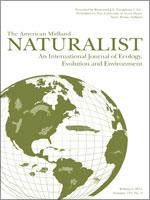Invasive Amur honeysuckle (Lonicera maackii) creates a dense shrub layer in eastern deciduous forests that negatively impacts native herbs and tree seedlings. Given the well-studied influence of habitat structure on spider abundance and guild composition, we examined the effects of this invasive shrub on spiders in forests of southwestern Ohio. Because spiders are sensitive to shrub architecture, we predicted that increased vegetative cover caused by invasion of L. maackii would increase diversity and abundance of spider taxa and guilds. We used paired plots (e.g., honeysuckle present and honeysuckle-absent) in ten deciduous forest locations to sample spiders and measured vertical cover of woody vegetation in the shrub layer. Abundance of spiders overall, spider families (Anyphaenidae, Araneidae, Salticidae, Theridiidae) and spider guilds (foliage runners, orb weavers, space web builders, stalkers), was higher in honeysuckle-present than in honeysuckle-absent plots, but diversity was not affected. Ordination of spider taxa and guilds significantly distinguished honeysuckle-present from honeysuckle-absent plots. Invasion by honeysuckle more than doubled the amount of vertical cover on honeysuckle-present plots compared to honeysuckle-absent plots. This increased vertical cover explained the significant increase in abundance of spiders and spider guilds on honeysuckle-present plots, likely because of increased complexity of vegetation. While a positive association between vegetation complexity, spider abundance, and guild structure has been documented for native habitats, our study extends this relationship to result from invasion by an exotic shrub. Because spiders are important predators in forest food webs, and their abundance is higher in areas containing honeysuckle, forests could be managed to retain some honeysuckle in the system, thereby preserving their positive effect on spider populations.
How to translate text using browser tools
1 February 2014
Impact of the Invasive Shrub Lonicera maackii on Shrub-Dwelling Araneae in a Deciduous Forest in Eastern North America
Jessica D. Loomis,
Guy N. Cameron,
George W. Uetz
ACCESS THE FULL ARTICLE
It is not available for individual sale.
This article is only available to subscribers.
It is not available for individual sale.
It is not available for individual sale.





